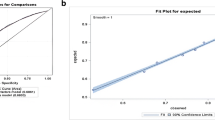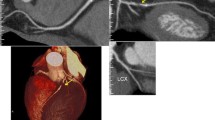Abstract
One of the main causes of death in the world is coronary artery disease (CAD). CAD occurs when there is stenosis in one or more of the three major coronary arteries: right coronary artery (RCA), left circumflex (LCX) artery, and left anterior descending (LAD) artery. The gold standard or CAD diagnosis is angiography, but it is invasive, costly, and time consuming. Therefore, researchers continually seek new machine learning methods that can screen for CAD non-invasively. For reliable and cost-effective CAD diagnosis, several algorithms have been developed. Most prior studies analyzed the presence or absence of CAD in a dichotomous manner. Herein, we studied the more complex problem of classification of stenosis in individual LAD, LCX, and RCA by applying machine learning algorithms on the Z-Alizadeh Sani dataset that comprised 303 subjects, each with 54 features. In addition, our new methodology is developed to handle model uncertainty in the prediction of individual artery stenosis. It uses the hyperplane distance from a sample and accuracy rate of the classifier during the training phase to enhance its performance. Our results demonstrate high diagnostic performance of the proposed method for diagnosis of stenosis in individual RCA, LCX, and LAD, achieving accuracy rates of 82.67%, 83.67% and 86.43%, respectively. This is the best performance of ML techniques applied to the Z-Alizadeh Sani dataset.






Similar content being viewed by others
References
Abdar M, Wijayaningrum VN, Hussain S, Alizadehsani R, Plawiak P, Acharya UR, Makarenkov V (2019) IAPSO-AIRS: a novel improved machine learning-based system for wart disease treatment. J Med Syst 43:1–23
Acharya UR, Fujita H, Lih OS, Adam M, Tan JH, Chua CK (2017) Automated detection of coronary artery disease using different durations of ECG segments with convolutional neural network. Knowl Based Syst 132:62–71
Acharya UR, Oh SL, Hagiwara Y, Tan JH, Adeli H, Subha DP (2018) Automated EEG-based screening of depression using deep convolutional neural network. Comput Methods Progr Biomed 161:103–113
Alizadehsani R, Habibi J, Hosseini MJ, Boghrati R, Ghandeharioun A, Bahadorian B, Sani ZA (2012a) Diagnosis of coronary artery disease using data mining techniques based on symptoms and ecg features. Eur J Sci Res 82:542–553
Alizadehsani R, Hosseini MJ, Boghrati R, Ghandeharioun A, Khozeimeh F, Sani ZA (2012b) Exerting cost-sensitive and feature creation algorithms for coronary artery disease diagnosis. Int J Knowl Discov Bioinform (IJKDB) 3:59–79
Alizadehsani R, Habibi J, Bahadorian B, Mashayekhi H, Ghandeharioun A, Boghrati R, Sani ZA (2012c) Diagnosis of coronary arteries stenosis using data mining. J Med Sig Sens 2:153–159
Alizadehsani R, Habibi J, Alizadeh Sani Z, Mashayekhi H, Boghrati R, Ghandeharioun A, Khozeimeh F, Alizadeh-Sani F (2013a) Diagnosing coronary artery disease via data mining algorithms by considering laboratory and echocardiography features. Res Cardiovasc Med 2:133–139
Alizadehsani R, Habibi J, Hosseini MJ, Mashayekhi H, Boghrati R, Ghandeharioun A, Bahadorian B, Sani ZA (2013b) A data mining approach for diagnosis of coronary artery disease. Comput Methods Progr Biomed 111:52–61
Alizadehsani R, Zangooei MH, Hosseini MJ, Habibi J, Khosravi A, Roshanzamir M, Khozeimeh F, Sarrafzadegan N, Nahavandi S (2016) Coronary artery disease detection using computational intelligence methods. Knowl Based Syst 109:187–197
Alizadehsani R, Hosseini MJ, Khosravi A, Khozeimeh F, Roshanzamir M, Sarrafzadegan N, Nahavandi S (2018) Non-invasive detection of coronary artery disease in high-risk patients based on the stenosis prediction of separate coronary arteries. Comput Methods Progr Biomed 162:119–127
Alizadehsani R, Abdar M, Roshanzamir M, Khosravi A, Kebria PM, Khozeimeh F, Nahavandi S, Sarrafzadegan N, Acharya UR (2019a) Machine learning-based coronary artery disease diagnosis: a comprehensive review. Comput Biol Med 111:1–14
Alizadehsani R, Roshanzamir M, Abdar M, Beykikhoshk A, Khosravi A, Panahiazar M, Koohestani A, Khozeimeh F, Nahavandi S, Sarrafzadegan N (2019b) A database for using machine learning and data mining techniques for coronary artery disease diagnosis. Sci Data 6:227
Arabasadi Z, Alizadehsani R, Roshanzamir M, Moosaei H, Yarifard AA (2017) Computer aided decision making for heart disease detection using hybrid neural network-Genetic algorithm. Comput Methods Progr Biomed 141:19–26
Babaoglu I, Baykan OK, Aygul N, Ozdemir K, Bayrak M (2009) Assessment of exercise stress testing with artificial neural network in determining coronary artery disease and predicting lesion localization. Expert Syst Appl 36:2562–2566
Babaoğlu I, Fındık O, Bayrak M (2010) Effects of principle component analysis on assessment of coronary artery diseases using support vector machine. Expert Syst Appl 37:2182–2185
Beaumont R, Bhaganagar K, Segee B, Badak O (2009) Using fuzzy logic for morphological classification of IVUS-based plaques in diseased coronary artery in the context of flow-dynamics. Soft Comput 14:265–272
Ben-Hur A, Weston J (2010) A user’s guide to support vector machines, Data mining techniques for the life sciences. Springer, New York, pp 223–239
Dekamin A, Sheibatolhamdi A (2017) A data mining approach for coronary artery disease prediction in Iran. J Adv Med Sci Appl Technol 3:29–38
Garcia EV, Cooke CD, Folks RD, Santana CA, Krawczynska EG, De Braal L, Ezquerra NF (2001) Diagnostic performance of an expert system for the interpretation of myocardial perfusion SPECT studies. J Nucl Med 42:1185–1191
Giri D, Acharya UR, Martis RJ, Sree SV, Lim T-C, Ahamed T, Suri JS (2013) Automated diagnosis of coronary artery disease affected patients using LDA, PCA, ICA and discrete wavelet transform. Knowl Based Syst 37:274–282
Heuss SC, Schwartz BJ, Schneeberger AR (2018) Second opinions in psychiatry: a review. J Psychiatr Pract 24:434–442
Hillen MA, Gutheil CM, Smets EMA, Hansen M, Kungel TM (2017) The evolution of uncertainty in second opinions about prostate cancer treatment. Health Expect 20:1264–1274
Hossain MS, Rahaman S, Mustafa R, Andersson K (2018) A belief rule-based expert system to assess suspicion of acute coronary syndrome (ACS) under uncertainty. Soft Comput 22:7571–7586
Hosseinzadeh F, Ebrahimi M, Goliaei B, Shamabadi N (2012) Classification of lung cancer tumors based on structural and physicochemical properties of proteins by bioinformatics models. PLoS ONE 7:e40017–e40017
Mandal I, Sairam N (2012) Accurate prediction of coronary artery disease using reliable diagnosis system. J Med Syst 36:3353–3373
Muthukaruppan S, Er MJ (2012) A hybrid particle swarm optimization based fuzzy expert system for the diagnosis of coronary artery disease. Expert Syst Appl 39:11657–11665
Oh SL, Hagiwara Y, Raghavendra U, Yuvaraj R, Arunkumar N, Murugappan M, Acharya UR (2018) A deep learning approach for Parkinson’s disease diagnosis from EEG signals. Neural Comput Appl. https://doi.org/10.1007/s00521-00018-03689-00525
Ordonez C, Omiecinski E, Braal L, Santana CA, Ezquerra N, Taboada JA, Cooke D, Krawczynska E, Garcia EV (2001) Mining constrained association rules to predict heart disease. In: Proceedings 2001 IEEE international conference on data mining, pp 433–440
Patidar S, Pachori RB, Acharya UR (2015) Automated diagnosis of coronary artery disease using tunable-Q wavelet transform applied on heart rate signals. Knowl Based Syst 82:1–10
Paul AK, Shill PC, Rabin MRI, Murase K (2018) Adaptive weighted fuzzy rule-based system for the risk level assessment of heart disease. Appl Intell 48:1739–1756
Soni J, Ansari U, Sharma D, Soni S (2011) Predictive data mining for medical diagnosis: an overview of heart disease prediction. Int J Comput Appl 17:43–48
Tan P-N (2007) Introduction to data mining. Pearson Education, Delhi
Tan JH, Hagiwara Y, Pang W, Lim I, Oh SL, Adam M, Tan RS, Chen M, Acharya UR (2018) Application of stacked convolutional and long short-term memory network for accurate identification of CAD ECG signals. Comput Biol Med 94:19–26
Yıldırım Ö, Pławiak P, Tan R-S, Acharya UR (2018) Arrhythmia detection using deep convolutional neural network with long duration ECG signals. Comput Biol Med 102:411–420
Author information
Authors and Affiliations
Corresponding author
Ethics declarations
Conflict of interest
The authors declare that there is no conflict of interest.
Ethical approval
This article does not contain any studies with human participants or animals performed by any of the authors.
Additional information
Communicated by V. Loia.
Publisher's Note
Springer Nature remains neutral with regard to jurisdictional claims in published maps and institutional affiliations.
Rights and permissions
About this article
Cite this article
Alizadehsani, R., Roshanzamir, M., Abdar, M. et al. Model uncertainty quantification for diagnosis of each main coronary artery stenosis. Soft Comput 24, 10149–10160 (2020). https://doi.org/10.1007/s00500-019-04531-0
Published:
Issue Date:
DOI: https://doi.org/10.1007/s00500-019-04531-0




